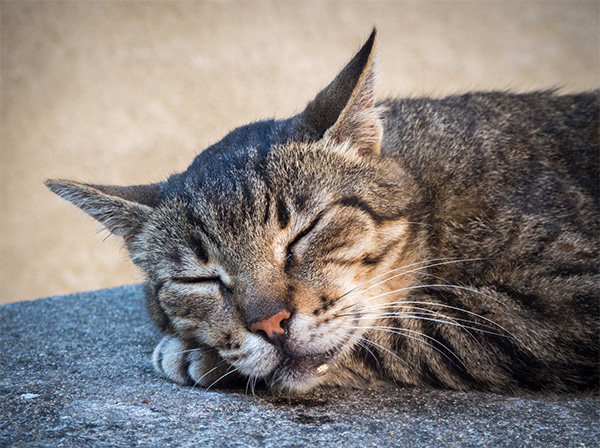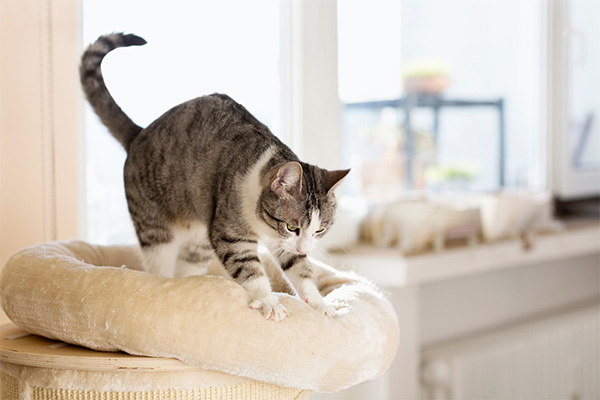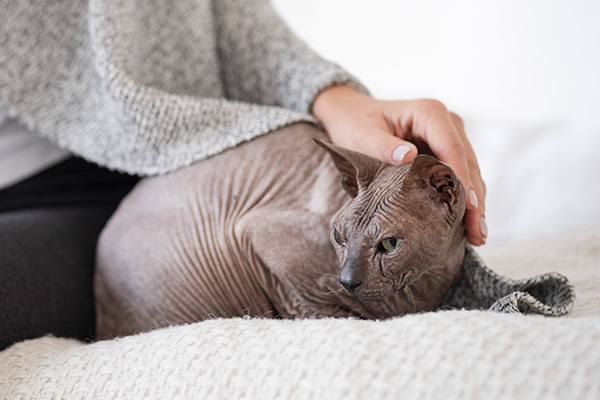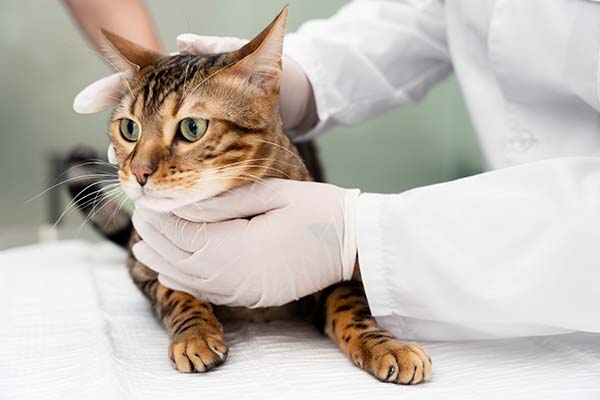As cat owners, you may notice your cat drool occasionally and wonder why and if it's something you should be concerned about. Cat drooling is sometimes natural, especially when relaxed, but it can also indicate an underlying issue. For instance, cats may drool due to dental diseases, such as gum infections or tooth problems. Additionally, nausea in cats, mouth trauma, or a foreign body in the throat can also lead to drooling. Other triggers include exposure to a toxic substance like household cleaners or stress during a car ride. In more serious cases, upper respiratory infections or issues related to the small intestine can cause excessive drooling in cats.
In this article, we will help you recognize when cat drooling recently is a normal behavior or when it may require supportive care from a veterinarian.
What Is Cat Drooling?
Cat drooling refers to the excess production of saliva that drips from your cat’s mouth. While cats don't typically drool as much as dogs, it does happen occasionally. Drooling can be triggered by both harmless and serious factors, making it essential to understand what’s normal and what’s not.
Do All Cats Drool?
Not all cats drool, and those that do may not drool consistently. While some cats never drool, others may drool when they feel extremely relaxed, nervous, or even unwell. Understanding your cat's typical behavior can help determine if drooling might be something to worry about.
Normal Drooling vs. Abnormal Drooling
Differentiating between normal and abnormal drooling is essential. A little drool while your cat is happy and purring is usually harmless. However, if your cat is drooling excessively or constantly, it might indicate an underlying cause, such as dental disease, a foreign object in the cat's mouth, or even toxic substances. These cases may require medical attention from veterinary professionals.
16 Reasons Cats Drools

Your Cat is Relaxed
Many cats drool when deeply relaxed, such as during a petting session or while purring. This drooling can be traced back to kittenhood when nursing was a comforting and soothing activity. When adult cats feel similarly content, their drooling might resurface.
During Sleep
Some cats drool in their sleep, particularly when in a deep state of relaxation. Finding a small wet spot on your cat’s pillow is often nothing to worry about, as this can happen naturally when they are at ease.
Kneading

Kneading is a typical behavior in cats, where they rhythmically press their paws into soft surfaces, which often leads to drooling. This combination of behaviors is reminiscent of kittenhood, making it a sign of a happy cat. However, if the cat drools excessively during kneading, it’s wise to monitor for other health problems.
Dental Disease
One common reason for excessive drooling in cats is dental disease. Issues like gum disease, mouth ulcers, or tooth infections can cause significant discomfort, leading to excess drooling. If your cat's teeth appear discolored or they exhibit pain when eating, it could signal dental problems requiring a vet’s intervention. Early detection through routine oral exams can help prevent serious mouth issues.
Oral Injuries and Foreign Objects
Mouth injuries or the presence of a foreign object, such as a sewing needle or other sharp items, can lead to excessive cat drooling. Signs include pawing at the face, refusal to eat, or visible distress. In these cases, it’s important to avoid pulling the object out and instead, take your cat to the vet for an oral exam.
Nausea-Induced Drooling
Cats, like humans, may drool when they're feeling nauseous. Nausea in cats can stem from several causes, such as gastrointestinal problems or motion sickness during car rides. If your cat is drooling and seems uncomfortable or is vomiting, a vet visit is necessary.
Poisoning or Toxin Exposure
Exposure to toxic substances, such as certain plants, cleaning chemicals, or human medications, can cause your cat to drool excessively. If you suspect toxin exposure, seeking veterinary care immediately is important, as this can lead to serious health issues.
Heat Stress

Cats can drool when they’re overheated or suffering from heat stress. Panting and drooling can indicate that your cat is having difficulty regulating its body temperature. If your cat is exposed to excessive heat, make sure they have access to a cool, shaded area to help prevent heatstroke.
Stress or Fear
Stressful situations, such as vet visits, car rides, or environmental changes, can cause cats to drool. This type of drooling is typically short-lived and tends to stop once the source of stress is eliminated. If your cat continues to drool long after the stressful event, a vet checkup might be needed.
Medications
Some medications taste bad or cause irritation, leading to cat drooling. This is a very common behavior after taking certain medicines, as the cat’s salivary glands overproduce saliva in response. If your cat drools excessively after medication, consult only your vet to explore alternative treatment options or dosages to prevent discomfort.
Kidney Disease
In older cats, kidney disease can lead to uremia, a buildup of toxins in the blood that may cause drooling. This condition is serious and requires prompt veterinary attention. Additional signs of kidney disease include lethargy, weight loss, and alterations in urination patterns.
Drooling in Older Cats
As cats age, they may become more prone to drooling, particularly if they develop conditions like kidney disease or dental problems. Special attention is needed to monitor for changes in their drooling habits, as these may be signs of more serious underlying medical reasons.
Oral Infections or Ulcers

Persistent bad breath, combined with drooling, is a red flag for cat oral disease. Conditions like abscesses, ulcers, and infections can lead to excessive salivation. Routine dental checkups are crucial for identifying and addressing these issues early on.
Anticipation of Food
When cats drool due to anticipation of food, it's often a result of excitement or conditioning. Just like dogs, cats may begin drooling when they see their food bowl or hear the sound of a can opening. This drooling is typically brief and happens right before meals. If the drooling stops shortly after feeding and the cat is otherwise healthy, it's likely due to food anticipation rather than an underlying health issue.
Upper Respiratory Infections
In cats, upper respiratory infections (URIs) can cause drooling due to throat irritation, congestion, or difficulty swallowing. Cats with URIs often show other signs like sneezing, nasal discharge, coughing, or labored breathing. Drooling in these cases typically accompanies these symptoms, especially if the cat has trouble eating or drinking. If your cat is drooling alongside respiratory symptoms, it may be due to a URI, and a vet visit is recommended for diagnosis and treatment.
Kidney Disease
Kidney disease in cats can lead to drooling due to nausea and mouth ulcers, which are common in advanced stages. Cats with kidney disease may also show signs like weight loss, increased thirst, frequent urination, lethargy, and poor coat condition. If your cat's drooling is accompanied by these symptoms, along with a decline in overall health, it could indicate kidney issues. Consulting a veterinarian is important to confirm the diagnosis and suggest suitable treatment options.
